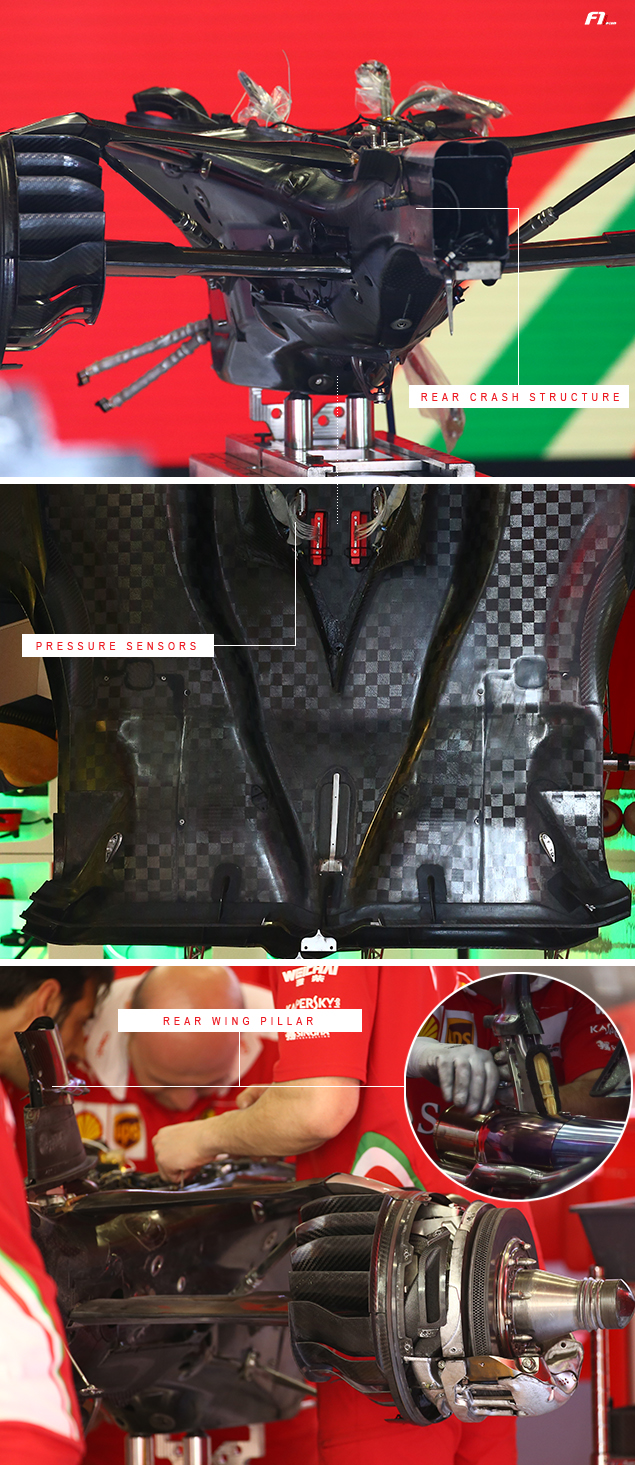
©F1i
THE THINNER THE BETTER
The 2016-spec gearbox casing is much tighter than its predecessor, especially the base. That’s because both MGUs have been moved elsewhere. The MGU-H used to be inside the casing, placed between the compressor and turbine at the back of the engine, but it is now implanted at the heart of the ICE in lieu of the previous intercooler. As for the MGU-K, we have already mentioned that it has been moved from the rear of the engine to the left-hand side.
With this new setup decluttering the rear of the SF16-H, the air can flow through a widened furrow in the car floor. That way, it can go across the entire width of the diffuser (see middle picture with the pressure sensors used to measure how efficient the diffuser is). The tighter the back of a car is, the faster the air flows above the diffuser, which in turn contributes towards sucking more air from underneath the car in conjunction with the diffuser.
On the SF16-H, the rear wing central pillar goes through the exhaust pipe (an installation see on most other cars but not the Mercedes) and is attached to the gearbox casing. One shall also notice how sophisticated the brake duct winglets are.






